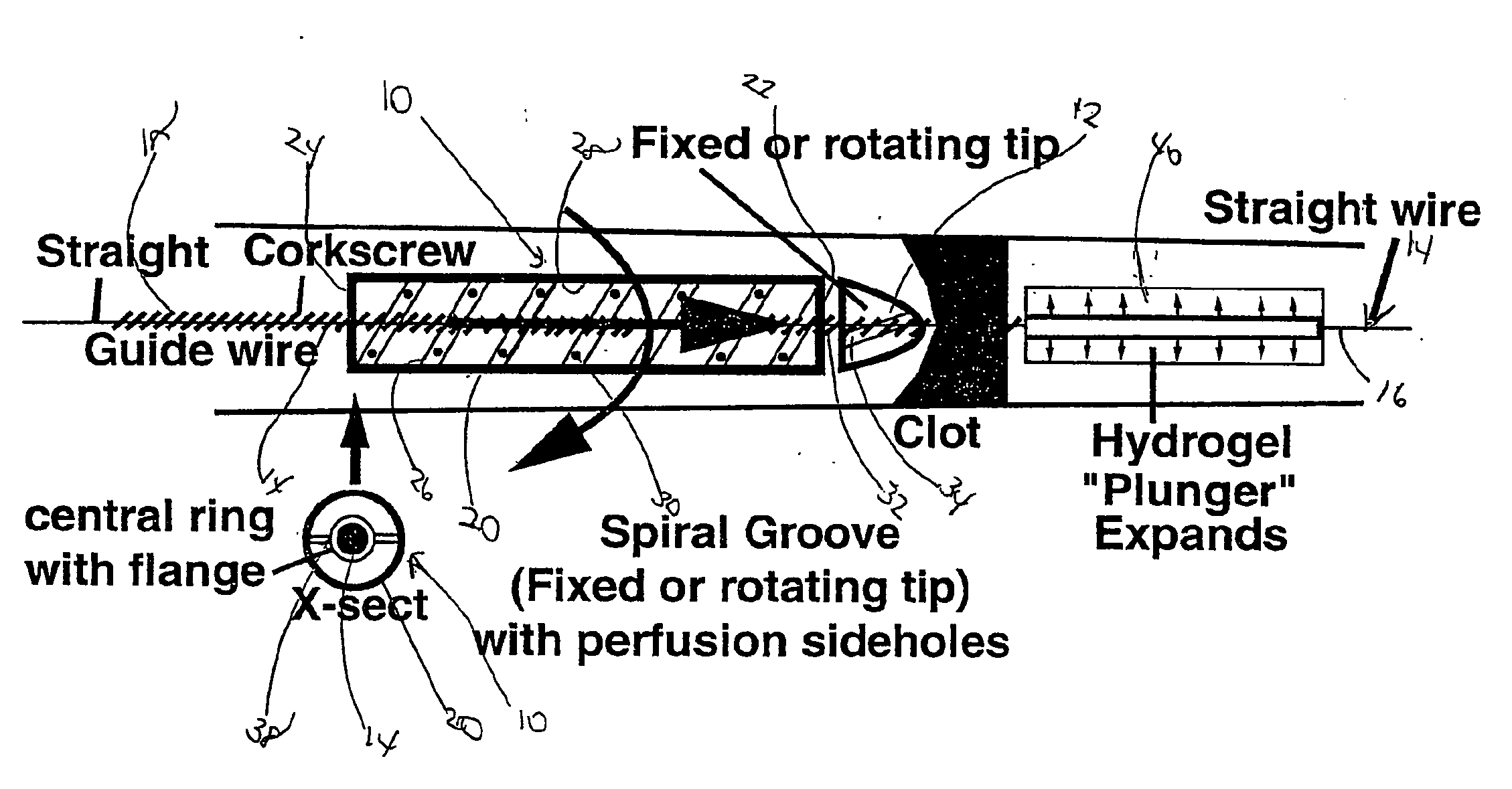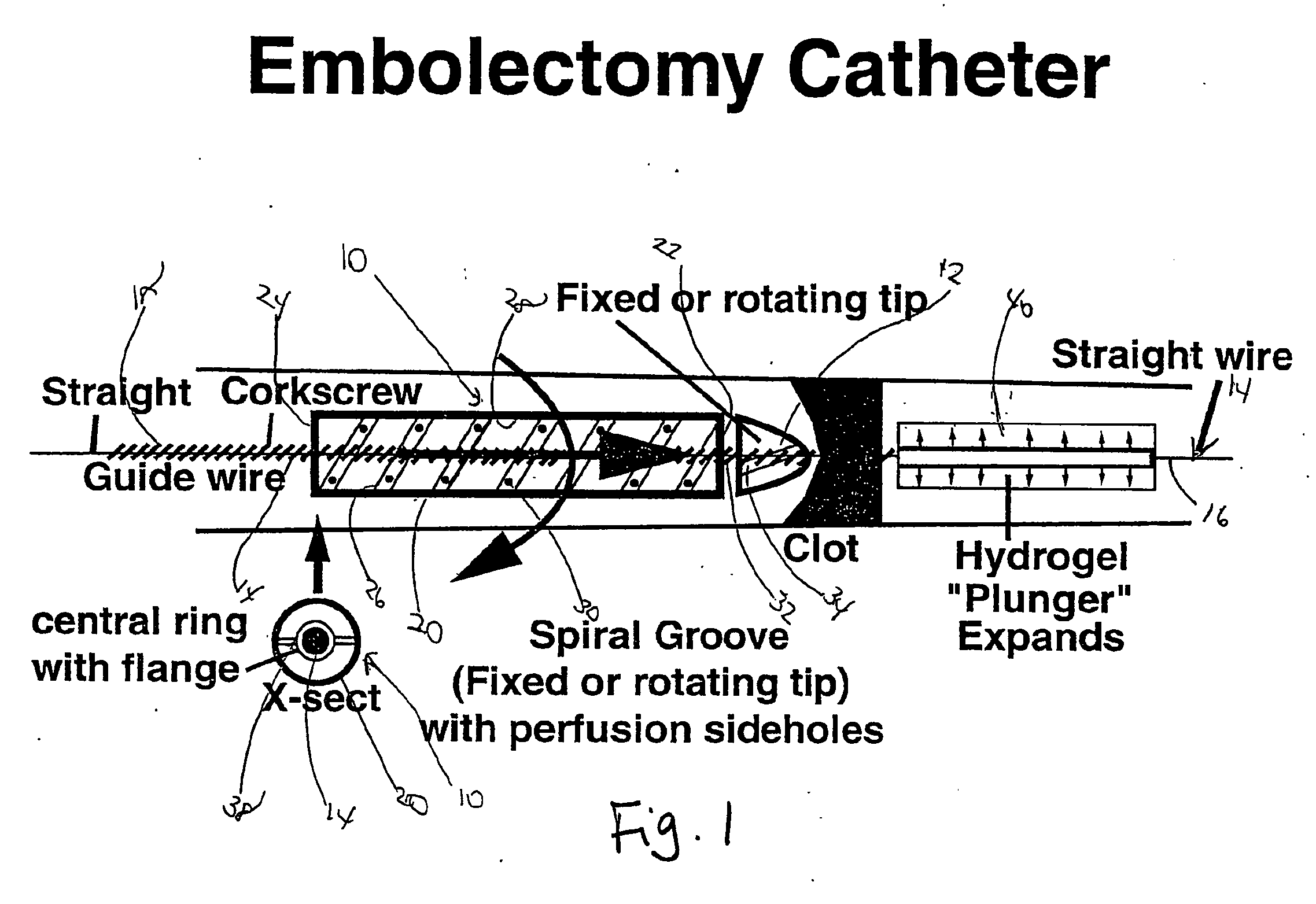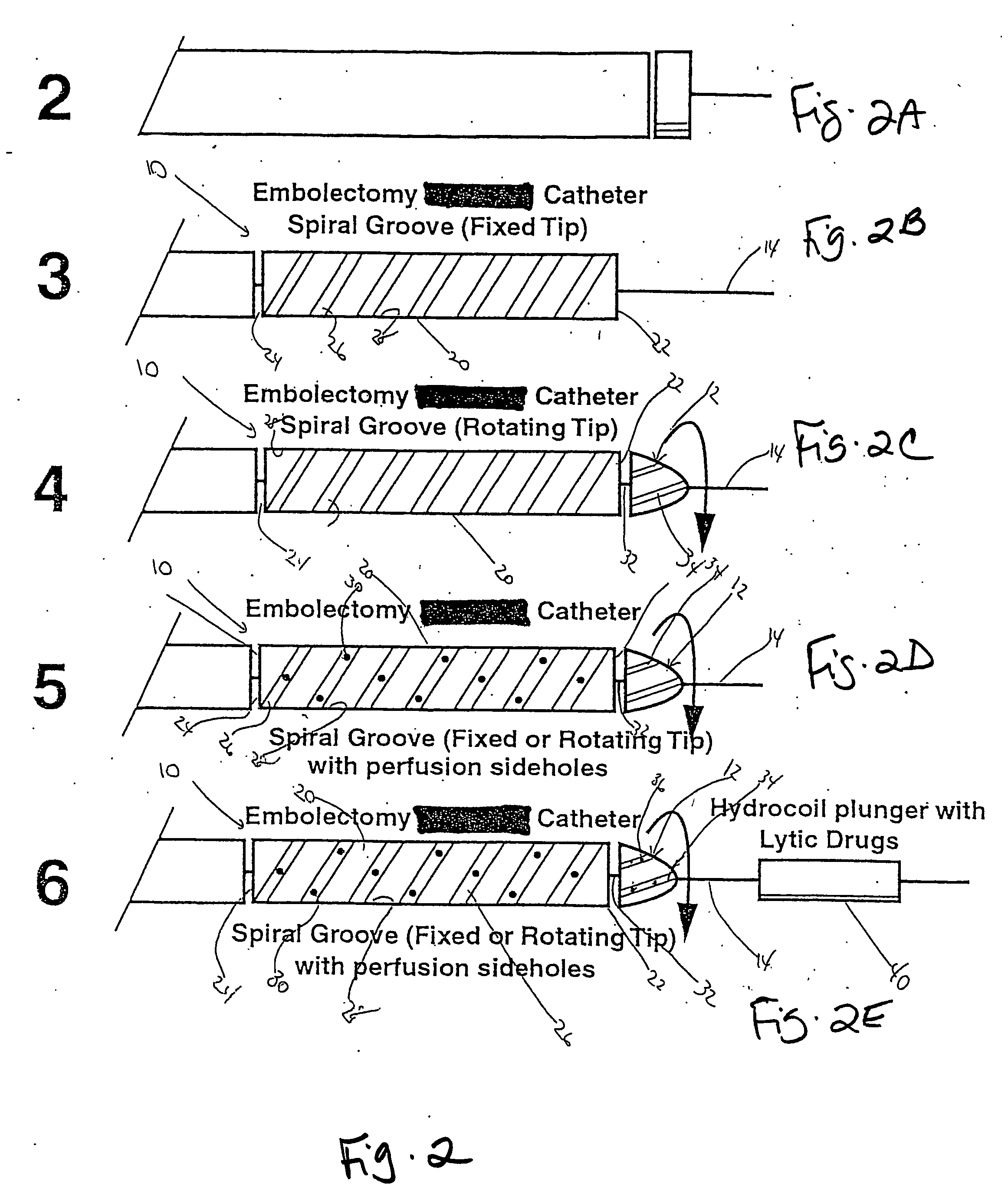Embolectomy Catheter
a catheter and embolism technology, applied in the field of medical devices, can solve the problems of tissue ischemia, more serious effects, and blockage or disruption of normal flow of arterial blood,
- Summary
- Abstract
- Description
- Claims
- Application Information
AI Technical Summary
Problems solved by technology
Method used
Image
Examples
Embodiment Construction
[0018] The present invention provides an embolectomy catheter, generally shown at 10 in the figures, and method of using the same. The catheter 10 is very flexible and includes a tip 12 that can be rotating or fixed. The various parts of the catheter are made of materials known to those of skill in the art that are sufficient to perform the method of the present invention.
[0019] The term “guidewire” as used herein can be any guidewire 14 known to those of skill in the art to be useful in treating thrombi. Examples of such guidewires 14 are well known to those of skill in the art. Preferably, the guidewire 14 includes both straight 16 and corkscrew 18 portions, such that the corkscrew portions of the guidewire enable the catheter to be advanced toward the clot. The corkscrew portions function as threading about which the catheter is wound. The guidewire includes a distal end and a proximal end.
[0020] The term “hydrophilic material” as used herein is intended to include a polymer ne...
PUM
 Login to View More
Login to View More Abstract
Description
Claims
Application Information
 Login to View More
Login to View More - R&D
- Intellectual Property
- Life Sciences
- Materials
- Tech Scout
- Unparalleled Data Quality
- Higher Quality Content
- 60% Fewer Hallucinations
Browse by: Latest US Patents, China's latest patents, Technical Efficacy Thesaurus, Application Domain, Technology Topic, Popular Technical Reports.
© 2025 PatSnap. All rights reserved.Legal|Privacy policy|Modern Slavery Act Transparency Statement|Sitemap|About US| Contact US: help@patsnap.com



